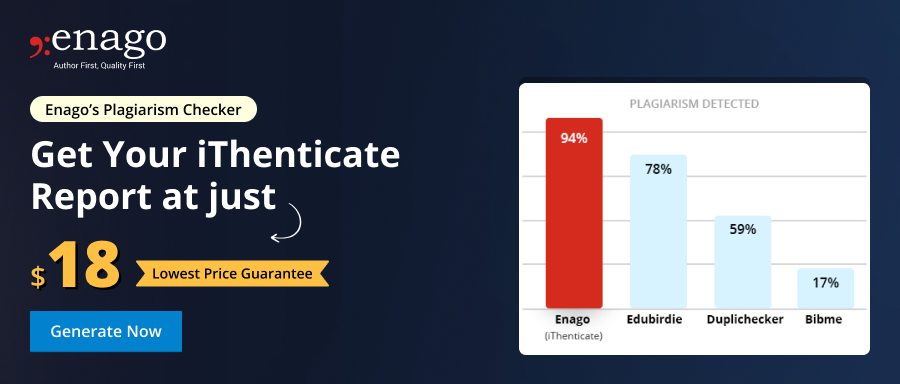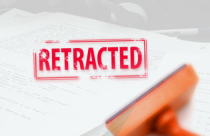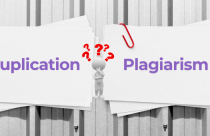How to Avoid Plagiarism in Research Papers (Part 2)

We introduced the definition of plagiarism and instructions on reusing intellectual output from others without committing plagiarism. We also provided links to helpful tools to help organize your references (e.g., EndNote or Reference Manager) and check plagiarism (e.g., iThenticate and HelioBLAST [formerly eTBLAST]). This article offers additional information and examples on paraphrasing, patchwriting, and quoting. Read more about these in our previous article.
More than Just Words
Many, if not most, people presume that plagiarism refers to copying others’ words without giving that person credit. They would be correct; however, plagiarism is more than that. It also involves copying another’s “ideas” and data. Ideas, just as words or data, are “owned” by the person who created them. Taking one’s ideas as your own without proper credit is just as serious as copying his or her words without credit. Plagiarism is a serious professional infraction. The actions taken against the offender can be anything from the retraction of a paper to the loss of research funding. Therefore, one must try their best to avoid plagiarism.
Quoting vs. Paraphrasing
In a research paper, references are used throughout to support findings. To help the author, journals provide guidelines for in-text citations and references (e.g., articles, books, essays) based on the recommended style guide. It is also important to determine whether to quote a reference directly or paraphrase it. What’s the difference? Again, don’t be pulled into the trap of believing that paraphrasing won’t be considered plagiarism. You must be very careful here.
What is Quoting? It is reproducing someone else’s words. Although it is often necessary, quotes should be used sparingly. When necessary, quotes are used to clarify, define something in the text, or support a claim.
Example:
The elephant is the largest mammal in the world and can weigh nearly eight tons. It has a “massive body, large ears and a long trunk, which has many uses ranging from using it as a hand to pick up objects, as a horn to trumpet warnings, an arm raised in greeting to a hose for drinking water or bathing.” (Source: https://www.worldwildlife.org/species/elephant)
This quote (note the quotation marks) gives a good verbal description of what an elephant looks like. We don’t need to add anything to it and it would be difficult to paraphrase and retain the visual. We have given credit to the source in the parentheses.
What is Paraphrasing? It is using your own words to express what someone else has written. As with quotes, paraphrasing must also be cited. Remember to give credit even when paraphrasing. When paraphrasing, ensure that the reference is provided and the main idea/concept is not altered. Furthermore, using a paraphrasing tool can help in improving your writing instantly.
Example:
The elephant is the largest mammal in the world and can weigh nearly eight tons. Its large floppy ears help to cool its body and protect it from insects. Its proboscis that runs from its head to the ground and is used as a tool and for drinking and bathing. (Source: https://www.worldwildlife.org/species/elephant )
Here, the information has been paraphrased, but the quoted version is a better definition. As mentioned, quotations can be quite useful for defining and clarifying an idea, but must be used only when necessary.
Paraphrasing is quite useful but it can be difficult to do. Some good guidelines for paraphrasing are as follows:
- Ensure that you are completely aware of the message behind the quote.
- Compose your paraphrase without referring to the quote.
- Compare your paraphrase with the quote to ensure that the meanings are the same.
This takes some time but it will help avoid plagiarism accusations. Furthermore, plagiarism can be avoided at the initial stage by using a plagiarism checker.
Patchwriting
Patchwriting refers to text that is too similar in format and wording to the original quote. This can be a sign of not fully understanding the message. Be mindful of this. It is not acceptable to simply use synonyms to replace original words.
It is easy to simply copy text off the Internet for just about anything we want to discuss. We copy and paste it into a blank virtual piece of paper. We cut out superfluous information and add our own words. This is patchwriting, and it is still plagiarism which can be avoided using a plagiarism detection tool.
Example:
The pachyderm is the largest mammal in the world. It weighs anywhere from 500 pounds to eight tons. It has a huge body, big ears, and an extended trunk that can pick up objects, sound warnings, greet others, drink water, or bathe.
Would this need to be cited? Yes, this is clearly patchwriting. We merely deleted some words and shortened the sentence, but the original message is the same.
Remember, when paraphrasing, do not just substitute synonyms for original words. Think about what is being conveyed. Write down the “thoughts” behind the original words, not the words themselves. This will help you avoid the patchwriting trap.
You are asked to write a definition of “species.” Can you copy verbatim the definition out of the dictionary without having to cite it? Can you use the definition in Wikipedia without a citation? Why or why not?
Remember, plagiarism is a multifaceted challenge that extends beyond the mere duplication of words to include ideas, data, and even writing styles. Whether quoting, paraphrasing, or avoiding patchwriting, adhering to ethical writing practices is essential to maintain academic and professional integrity. Plagiarism checking tools, such as Turnitin, and Enago Plagiarism Checker, serve as invaluable allies in this endeavor.
Plagiarism detection tools help detect similarities in text, verify originality, and ensure proper citations, enabling writers to refine their work before submission. By using these tools and following best practices, you can confidently create work that is both original and ethically sound.











The article is very useful for students & researchers.Reference to the copyright law may be included in the article at appropriate places.
Hi,
Thank you for sharing your feedback. We will look into it and make the necessary changes.